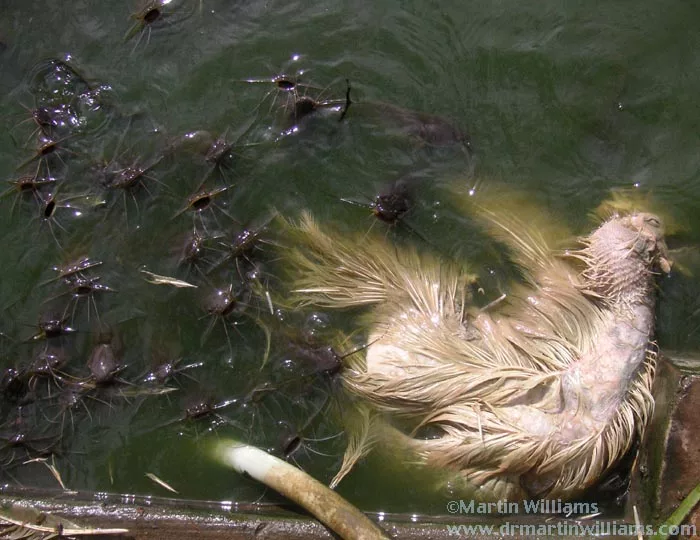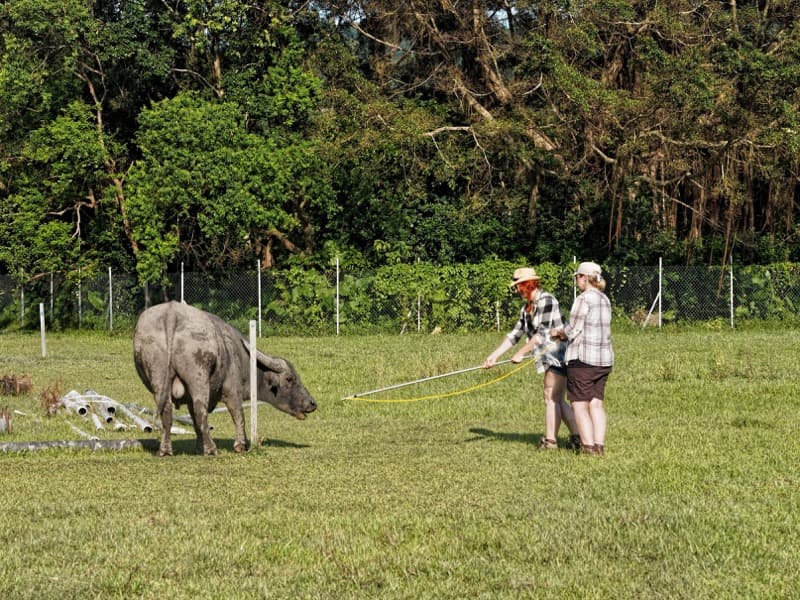At the end of December 2013 came news that NASA has ideas for a novel robotic space vehicle. Dubbed a “super ball bot”, this would be roughly spherical, built of interlocking rods and cables that would allow it to compress and bounce when landing on another world, before regaining its shape and rolling around to explore. Dozens of the bots could be folded and packed together for a single mission.
It seems a weird concept, yet recent discoveries are helping show that our solar system is a weird place.
Several of these discoveries involve moons, but planets yield surprises too. Mercury, the planet nearest the sun, has a thin atmosphere despite relatively feeble gravity and daytime temperatures soaring to around 450°C. This might be formed by particles from the solar wind, which reach the surface thanks to vortex-like magnetic “tornadoes”, forming windows in the overall magnetic field that otherwise deflects them. And despite the intense heat, in 2012, NASA’s Messenger satellite made observations consistent with ice on Mercury – in polar craters shaded from the sun.
Two scientists have suggested that diamonds form in the atmospheres of Saturn and Jupiter. Their scenario involves lightning zapping methane molecules apart to form hydrogen and carbon, with the latter clumping together to become soot particles that fall and experience increasing pressures to become diamonds. These in turn become so hot they liquefy, and turn to diamond rain. Nature quoted one of the researchers, Kevin Baines of the University of Wisconsin-Madison, as saying, “If you had a robot there, it would sit there and collect diamonds raining down,” while also noting some are sceptical about the story.
Though it was known that Mars has extinct volcanoes, there was a surprise in 1979, when Voyager spacecraft found volcanic activity on one of Jupiter’s moon’s, Io. With plumes of sulphur and sulphur dioxide rising up to 500km, lava flows over 500km long, and astronomers recently witnessing an eruption bigger than any in recorded history on earth, Io is the most geologically active body in the solar system. This is the result of powerful tidal forces, as it orbits massive Jupiter and is tugged by other moons.
While Io is a rocky world, with molten rock rather as on earth, elsewhere there are cold volcanoes, known as cyrovolcanoes. The first of these was likewise discovered by a Voyager spacecraft, as if passed by the most distant planet from the sun, Neptune. Observing the largest of Neptune’s 13 moons, Triton, Voyager 2 discovered there were geysers, sending fountains of icy material more than 5km upward. These are thought to be from seasonal temperature variations, though it seems a stretch to say there is real heating by the sun, given surface temperatures of around -235°C: cold enough that nitrogen forms frost on the surface.
At the south pole of a Saturn moon, Enceladus, there’s a cryovolcanic area reaching a relatively toasty -116°C. It’s known as the Tiger Stripes, for four almost parallel ridges that are 130km long, and split by central fractures. In 2005, observations by the Cassini spacecraft included a plume of icy material extending 500km above these stripes. Further research has shown that this is mainly water vapour and ice crystals, together with other chemicals including ammonia and carbon dioxide. The plume is brightest when Enceladus is at the furthest point in its orbit from Saturn, probably as the fractures become wider as Saturn’s influence weakens a little.
The observations suggest that there may be a watery ocean beneath Enceladus’ icy shell. Carolyn Porco, director of flight operations and imaging team leader for the Cassini spacecraft, said during a TED talk in 2007, “We have, possibly, liquid water, organic materials and excess heat. In other words we have possibly stumbled upon the holy grail of modern-day planetary exploration, or in other words an environment that is potentially suitable for living organisms.”
Last month came news of another moon that might similarly have a sub-surface ocean with extraterrestrial life – Europa, which orbits Jupiter. Europa had been considered one of the most intriguing objects in the Solar System since 1995, when observations by the Galileo orbiter led to theories it has a watery ocean beneath ice, and above a rocky interior.
Europa is criss-crossed by scars, and recent research bolsters notions that these arise from plate tectonics – with new material forming along some lines where ice plates are pulling apart, and other boundaries where plate material is pushed below the surface. “Having that mixing seems to be pretty important for establishing life,” commented planetary scientist Alyssa Rhoden, a NASA postdoctoral fellow who cofounded Destination Europa to promote plans for a new mission to this moon.
The plans were given added impetus by findings from NASA’s Hubble Space Telescope that were reported last month. Water vapour had been discovered above Europa, providing the first strong evidence that it has cryovolcanoes erupting water plumes. These may be vented by the linear cracks, much like the plumes from Enceladus’ Tiger Stripes.
Also like Enceladus, the jets were only seen when Europa was furthest from Jupiter, perhaps as the vents open as Jupiter’s gravitational influence fades. “The presence of the water has led scientists to speculate that the Europa we know today harbours life,” Nasa’s planetary science chief Dr James Green told BBC News.
But though such observations excite and tantalise scientists, budget constraints are holding back plans advocated by the Destination Europa team. Instead, the next mission to include Europa will be the Jupiter Icy Moon Explorer (JUICE), planned by the European Space Agency. This will assess the potential of three moons to support life, though will only pass close over Europa’s equator, rather than southern pole where the plume activity has been seen.
Even if all goes to plan with JUICE, we’ll need patience to learn if it detects signs there could be aquatic aliens within Europa – as it’s not due to launch until 2022, and will fly past the moons in the 2030s.
Written for South China Morning Post.
Early warnings of climate change
While climate change resulting from human activities might seem a new-fangled concept, there have been on-point predictions dating back many years.…
Ignoring Science Makes Global Climate Disaster as Inevitable as Titanic Submarine Implosion
Climate change has been prominent in worldwide news this summer (2023), notably as we have just lived through the hottest week…
Have you been bullied into health? Fear, quackery and Covid
So here we are with our modern-day wonder, the internet – where even with a smartphone, you can search for and…
Never mind the antimask-o-sphere. Science shows face masks help reduce Covid spread
Just had one of those silly Twitter “conversations” with someone who had position so fixed, impossible to change with facts. Yeah,…
A Covid scrapbook: snapshots from the crazy pandemic
I’ve read accounts of the Spanish Flu, which was the last major pandemic, mainly in 1918 [so over and done with…
Highly pathogenic bird flu variants mostly evolve in intensive poultry farming
Highly pathogenic bird flu variants evolve from regular, low pathogenic, bird flus, within intensive poultry farming.
Keep Your Underpants Duck Taped and Air Clean as Covid Wild Ride Continues
We’ve learned a lot about Covid, even developing vaccines. Yet Covid remains an issue, no matter how much we might wish…
Covid is airborne so ventilation and air filtration are important
Since early in the pandemic, I’ve been seeing scientists arguing Covid is airborne, even with hashtag #covidisairborne – including to counter…
Long Covid – info and links indicating major impact
Evidence is snowballing that Long Covid is also a serious issue, even affecting people in whom the disease initially appeared mild.
Perhaps Covid arose through lab leak of tweaked bat Coronavirus
Maybe humans tweaked bat coronaviruses in gain of function experiments, inadvertently creating Covid thro lab leak.
The Covid Conundrum: Endless Lockdowns, Let It Rip … or What?
Covid is airborne, which means that much as unprotected sex is a risk for HIV, unprotected breathing might result in Covid.
Science shows Covid including Omicron is Really Not the Flu
Some of the science showing Covid including Omicron is a huge issue; and one that looks set to be with us…
“Alarmist” Covid predictions outperform Covid deniers’ soothsaying
The disinfo downplaying Covid is often from rightwing, mainly money-minded folks who perhaps don’t care too much about actual people.
Covid virulence, vaccines and variants
Science can provide some insights into what may happen with Covid, along with ways to limit its impacts.
We’re in the Covid Era for the Long Haul
We’re in this for the long haul, with the virus like a relentless, invisible foe, ready to exploit errors, slip through…
My Strange n Surprising Summer Staycation with Cellulitis
rom quick pricking by unseen marine creature, to intense fever, and hospital stay for an infection deep within the skin.
Covid virulence, vaccines and variants
[Written for South China Morning Post on 6 January 2021] In January last year, as reports were emerging of the new…
The Viral Time Bomb – Pandemic of Our Time
Guan Yi, director of the State Key Laboratory of Emerging Infectious Diseases at Hong Kong University, has extensive experience of viruses;…
From China With Fear: the Wuhan Coronavirus Won’t Kill Us All
As news of Wuhan coronavirus emerges, evolutionary biology suggests potential for a pandemic, not killing high percentage of people.
Fightback Needed as Science and Life Support System Under Attack
Environmentalism is under assault; yet this planet is the only home we have; providing our food, air, water… It’s our life…
Secret World of Hong Kong Water Supply
Hong Kong’s water supply system has been vital to its development as a “world city”.
Hong Kong Belching Buffaloes n Bubbling Paddies and the Mystery Methane Rise
Prof Euan Nisbet leads a science team to Hong Kong in quest to help find why levels of potent greenhouse gas…




















